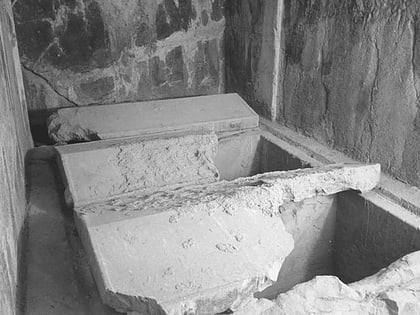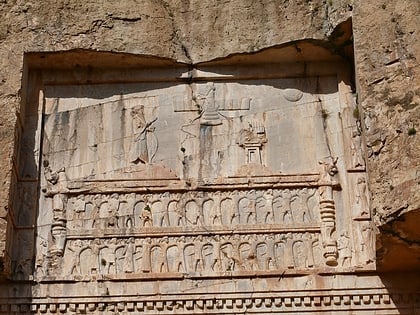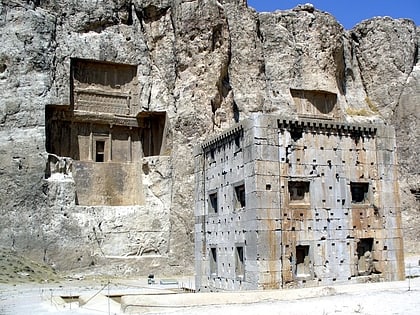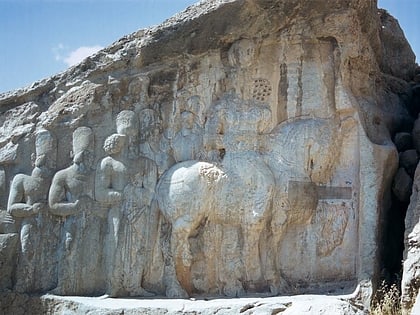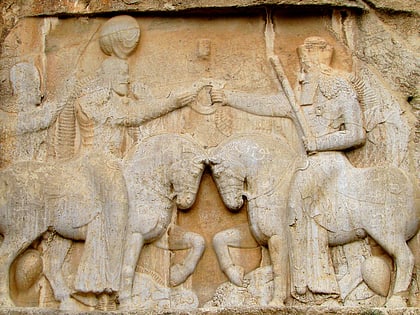Tomb of Darius I
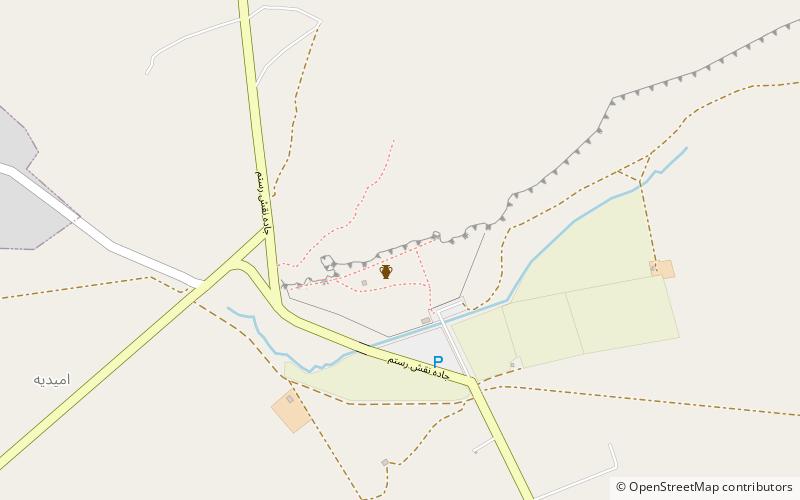
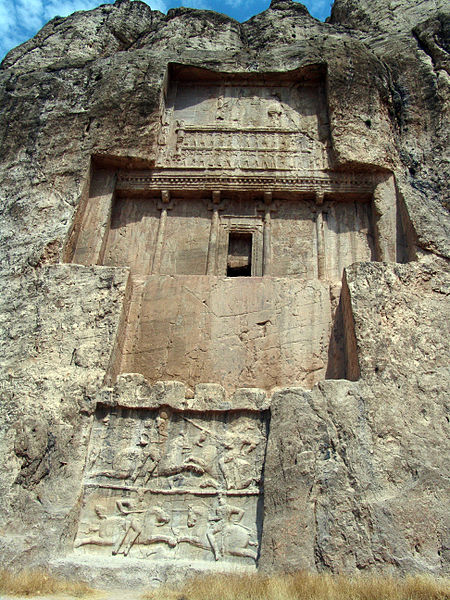
Facts and practical information
The Tomb of Darius I, also known as the Tomb of Darius the Great, is an ancient monument carved into a cliff face at the historical site of Naqsh-e Rustam in Iran. This grandiose resting place, attributed to Darius I, who ruled the Persian Empire from 522 to 486 BCE, stands as a testament to the Achaemenid architectural ingenuity and the imperial power of its time.
Constructed around 490 BCE, the tomb is part of a larger complex that includes the burial places of other Achaemenid kings. The facade of Darius's tomb is marked by a cross-shaped design, with the central recess housing the entrance to the burial chamber. The exterior is adorned with reliefs depicting figures and symbols of the Zoroastrian faith, as well as scenes of Darius receiving loyalty from his subjects.
Standing at approximately 15 meters in height, the tomb's elevated position was not only a symbol of the king's lofty status but also served a practical purpose of protecting the interned remains from natural elements and potential looters. The site, located near the ancient ceremonial capital of Persepolis, is recognized as a UNESCO World Heritage Site, reflecting its significance as a cultural and historical treasure.
Tomb of Darius I – popular in the area (distance from the attraction)
Nearby attractions include: Naqsh-e Rustam, Ka'ba-ye Zartosht, Naqsh-e Rajab, Ahura Mazda and Ardashir I.
